- Home
- Bobby Akart
Nuclear Winter Armageddon Page 2
Nuclear Winter Armageddon Read online
Page 2
Sagan was, however, right that human extinction would cause permanent harm to human civilization. It is debatable whether nuclear winter could cause human extinction. Rutgers professor Alan Robock, a respected nuclear winter researcher, believes it is unlikely. He commented, “Especially in Australia and New Zealand, humans would have a better chance to survive.”
Why Australia and New Zealand? A nuclear war would presumably occur mainly or entirely in the northern hemisphere. The southern hemisphere would still experience environmental disruption, but it would not be as severe. Australia and New Zealand further benefit from being surrounded by water which further softens the effect.
This is hardly a cheerful thought as it leaves open the chance of human extinction, at least for those of us north of the equator. Given all the uncertainty and the limited available research, it is impossible to rule out the possibility of human extinction. In any event, the possibility should not be dismissed.
Even if people survive, there could still be permanent harm to humanity. Small patches of survivors would be extremely vulnerable to subsequent disasters. They certainly could not keep up the massively complex civilization we enjoy today. In addition to the medical impact, the destruction of the power grid, the heartbeat of most nations, would likely occur due to the electromagnetic pulse generated by the nuclear detonations. It would take many years to rebuild the critical infrastructure ruined by the blasts.
It would be a long and uncertain rebuilding process and survivors might never get civilization back to where it is now. More importantly, they might never get civilization to where we now stand poised to take it in the future. Our potentially bright future could be forever dimmed, permanently.
Nuclear winter is a very large and serious risk. In some ways, it doesn’t change nuclear weapons policy all that much. Everyone already knew that nuclear war would be highly catastrophic. The prospect of a prolonged nuclear winter means that nuclear war is even more catastrophic. That only reinforces policies that have long been in place, from deterrence to disarmament. Indeed, military officials have sometimes reacted to nuclear winter by saying that it just makes their nuclear deterrence policies that much more effective. Disarmament advocates similarly cite nuclear winter as justifying their policy goals. But the basic structure of the policy debate unchanged.
In other ways, nuclear winter changes nuclear weapons policy quite dramatically. Because of nuclear winter, noncombatant states may be severely harmed by nuclear war. Nuclear winter gives every country great incentive to reduce tensions and de-escalate conflicts between nuclear-capable states.
Nation-states that are stockpiling nuclear weapons should also take notice. Indeed, the biggest policy implication of nuclear winter could be that it puts the interests of nuclear-capable nations in greater alignment. Because of nuclear winter, a nuclear war between any two major nuclear weapon states could severely harm each of the others. According to intelligence sources, there are nine total nuclear-armed states with Iran prepared to breakthrough as the tenth. This multiplies the risk of being harmed by nuclear attacks while only marginally increasing the benefits of nuclear deterrence. By shifting the balance of harms versus benefits, nuclear winter can promote nuclear disarmament.
Additional policy implications come from the risk of permanent harm to human civilization. If society takes this risk seriously, then it should go to great lengths to reduce the risk. It could stockpile food to avoid nuclear famine, or develop new agricultural paradigms that can function during nuclear winter.
And it could certainly ratchet up its efforts to improve relations between nuclear weapon states. These are things that we can do right now even while we await more detailed research on nuclear winter risk.
Against that backdrop, I hope you’ll be entertained and informed by this fictional account of the world thrust into Nuclear Winter. God help us if it ever comes to pass.
Contents
Real-World News Excerpts
Epigraph
Nuclear Winter II
Prologue
Part I
Chapter 1
Chapter 2
Chapter 3
Chapter 4
Chapter 5
Chapter 6
Chapter 7
Chapter 8
Part II
Chapter 9
Chapter 10
Chapter 11
Chapter 12
Chapter 13
Chapter 14
Chapter 15
Chapter 16
Part III
Chapter 17
Chapter 18
Chapter 19
Chapter 20
Chapter 21
Chapter 22
Chapter 23
Chapter 24
Part IV
Chapter 25
Chapter 26
Chapter 27
Chapter 28
Chapter 29
Chapter 30
Part V
Chapter 31
Chapter 32
Chapter 33
Chapter 34
Chapter 35
Chapter 36
Part VI
Chapter 37
Chapter 38
Chapter 39
Chapter 40
Chapter 41
Chapter 42
Chapter 43
Chapter 44
THANK YOU FOR READING NUCLEAR WINTER: ARMAGEDDON!
What’s coming next from Bobby Akart?
Other Works by Amazon Charts Top 25 Author Bobby Akart
Real-World News Excerpts
INDIA SUFFERS WORLD’S BIGGEST BLACKOUT AFTER POWER OUTAGE
~ Associated Press, July 31, 2012
India's energy crisis cascaded over half the country Tuesday when three of its regional grids collapsed, leaving 620 million people without government-supplied electricity for several hours in, by far, the world's biggest-ever blackout.
Power Minister Sushil Kumar Shinde blamed the new crisis on states taking more than their allotted share of electricity.
"Everyone overdraws from the grid. Just this morning I held a meeting with power officials from the states and I gave directions that states which overdraw should be punished. We have given instructions that their power supply could be cut," he told reporters.
"The situation is very grave. We are doing everything to restore power," the Power Minister said.
TEXAS POWER GRID WAS MINUTES AWAY FROM TOTAL COLLAPSE
~ KHOU*11, Houston, Texas, February 24, 2021
Last week, the Texas power grid was “4 minutes 37 seconds away from a total collapse,” meaning a statewide blackout, Electric Reliability Council of Texas (ERCOT)officials said at an emergency board meeting Wednesday. Had it happened, Texas would have been in the dark for weeks if not longer.
“This was a devastating event," one official said in his opening statements. "Power is essential to civilization."
ERCOT officials said controlled outages were implemented to prevent a statewide blackout, saying the storm was unlike anything Texas has experienced before.
Three-hundred and fifty-six generators were knocked offline during the storm event.
ISRAEL IS PREPARING TO ATTACK IRAN’S NUCLEAR SITES
~ Fox News via American Military News, March 5, 2021
In his first sit-down interview with an American news outlet, Israeli Defense Minister Benny Gantz said Friday that Israel has updated its target list and is preparing to strike Iranian nuclear sites if the world does not act to stop Iran’s nuclear development. Gantz said Israel has found numerous targets in Iran that would slow its nuclear development if attacked.
Gantz said Israel has identified thousands of rocket sites targets along the Israeli border with Lebanon, including many that are in civilian areas.
NUCLEAR WINTER WOULD THREATEN NEARLY EVERYONE ON EARTH
~ Science News, August 28, 2019
If the United States and Russia waged an all-out nuclear war, much of the land in the Norther
n Hemisphere would be below freezing in the summertime, with the growing season slashed by nearly 90 percent in some areas, according to a Rutgers-led study. Indeed, death by famine would threaten nearly all of the Earth's 7.7 billion people, according to a study in the Journal of Geophysical Research-Atmospheres.
Lead author Joshua Coupe and other scientists used a modern climate model to simulate the climatic effects of an all-out nuclear war between the United States and Russia. Such a war could send 150 million tons of black smoke from fires in cities and industrial areas into the lower and upper atmosphere, where it could linger for months to years and block sunlight.
"This means that we have much more confidence in the climate response to a large-scale nuclear war," Coupe said. "There really would be a nuclear winter with catastrophic consequences."
In both the new and old models, a nuclear winter occurs as soot (black carbon) in the upper atmosphere blocks sunlight and causes global average surface temperatures to plummet by more than 40 degrees Fahrenheit in some cases.
Epigraph
In any large-scale nuclear exchange between the superpowers, global environmental changes sufficient to cause the extinction of a major fraction of the plant and animal species on the earth are likely. In that event, the possibility of the extinction of Homo sapiens cannot be excluded.
~ Dr. Paul Ehrlich, Stanford biologist, 1983
If the greenhouse effect is a blanket in which we wrap ourselves to keep warm, nuclear winter kicks off the blanket.
~ Carl Sagan, Planetary Scientist and Author
The unleashed power of the atom has changed everything save our modes of thinking and we thus drift toward unparalleled catastrophe.
~ Albert Einstein, theoretical physicist
To live is to suffer, to survive is to find some meaning in the suffering.
~ Friedrich Nietzsche, German Philosopher
Now I am become death, the destroyer of worlds.
~ J. Robert Oppenheimer, theoretical physicist and Father of the Atom Bomb
Nuclear Winter II
Armageddon
In 1961, President Kennedy issued a letter to all American citizens, warning them about the threat of nuclear Armageddon. His solution was to build fallout shelters. The letter read, in part:
“We owe that kind of insurance to our families and to our country. The time to start is now. In the coming months, I hope to let every citizen know what steps he can take without delay to protect his family in case of an attack. I know you would not want to do less.”
Prologue
Friday, October 25
North American Aerospace Defense Command (NORAD)
Cheyenne Mountain, Colorado
DEFCON 1. The cocked pistol.
The North American Aerospace Defense Command—commonly referred to by its acronym, NORAD—was the nerve center of the U.S. military, especially during times of heightened tensions around the world. Two days following the nuclear exchange between Pakistan and India, the entirety of the nation’s defense forces was elevated to DEFCON 2, the next step in preparation for nuclear war. U.S. armed forces were ordered to be ready for immediate deployment, a status that assured they could engage the enemy in any manner within six hours. Once before, the U.S. had reached DEFCON 2 during the Cuban Missile Crisis of 1962. The nation had never reached DEFCON 1, the maximum state of readiness indicating a nuclear missile attack was imminent, until that morning.
Referred to as the cocked pistol, military personnel operated at DEFCON 1 every minute of the day. Around the globe, as well as from space, ground-based sensors and satellites transmitted data to NORAD’s advanced artificial intelligence systems for evaluation.
Like the operation of a human brain, NORAD’s AI collected information from these various sensors and compiled the data in one place for analysis. The military strategists located within Cheyenne Mountain pulled it together, made sense of it, and then passed it along to the commanders who made the decisions that defended America.
Cheyenne Mountain was truly the dragon that never sleeps. Native American folklore claimed Colorado’s Cheyenne Mountain was a sleeping dragon that saved the Ute Indians from a massive flood that invaded the valley surrounding the mountain. The Utes believed they were being punished by the Great Spirit, but after they repented, the dragon was sent to drink the water. The dragon then fell asleep, became petrified, and thereafter became known as Cheyenne Mountain.
Unlike the legend, Cheyenne Mountain, which was located outside Colorado Springs and just south of Denver, hadn’t slept in over half a century. Once made fully operational in the spring of 1966, the country’s most important military installation was home to NORAD.
The stress levels in the operations center were high for the airmen, whose focus was on detecting and tracking incoming nuclear threats to the U.S., but not from what might happen if a nuclear attack was initiated. The nerve center of NORAD was determined to detect a possible attack in order to give the nation’s defense network maximum response time.
Everyone in Cheyenne Mountain knew a nuclear missile fired from North Korea could reach the U.S. mainland in approximately thirty minutes. At DEFCON 1, nerves were frayed, creating an atmosphere of controlled chaos within the operations center.
America’s finest military commanders descended upon the battle cab, a dedicated operations center and meeting room used by the commander and senior members of the staff. If this state-of-the-art command center was the brain stem that gathered information from the sensors around the globe, the battle cab was the brain, which analyzed and made decisions based upon the information.
It was just after midnight local time when the dreaded, robotic words thundered through the command center.
“Launch detection! Launch detection.”
The suddenness of the announcement over the speaker system startled the NORAD team. Most were intently monitoring their computer screens while others chatted about the events of the past week. Even the lieutenant colonel on duty was casually sipping coffee while scrolling through news reports.
“Repeat. Confirmed launch detection. Coordinates are forty-one degrees, fourteen minutes, nine seconds north latitude and one hundred twenty-eight degrees, thirty-four minutes, thirty-nine seconds east longitude.”
The commander’s first reaction was to glance up at the digital clocks mounted throughout the operations center. Half an hour, he thought to himself. He knew the next few minutes would be the fastest of his life.
The team sprang into action. They’d repeatedly practiced for this moment. Only some were given the authority to speak aloud unless otherwise addressed by their commander.
“Source?” The colonel shouted his question.
“North Korea, sir,” replied one of the U.S. Air Force personnel monitoring a spy satellite. He added the precise location. “Mount Komdok.”
“Sneaky bastards,” the colonel muttered to himself. The Central Intelligence Agency had disclosed in the President’s Daily Brief that satellite reconnaissance indicated North Korea had built ballistic missile silos underneath a beachfront resort at Komdok-san. It was the closest point to the U.S. mainland from North Korea. “Do we have confirmation from our nuke sniffers?”
“Yes, sir. Positive confirmation from Constant Phoenix,” replied the same airman. Constant Phoenix was the name given the Boeing WC-135 aircraft specifically designed and deployed to monitor missile launches. Previously used as KC-135R tankers, they were upgraded and transformed into what was known in the military as nuclear sniffers. They were constantly deployed near America’s nuclear-capable enemies to provide the earliest possible information on a ballistic missile launch. Over the years, the old KC-135s had been replaced with new aircraft and the original nuclear sniffers were sent to the boneyard at Davis-Monthan Air Force Base in Arizona.
“Deploy defensive measures,” the colonel sternly instructed. He turned around to address his aide. “Get me the secretary of defense. Now!”
“Sir! We have a second laun
ch. Repeat. Second.” The airman paused. “Correction, sir. We have a second and third launch detected.” He emphasized the word third with trepidation in his voice.
“Coordinates?” asked the colonel.
“Confirmed coordinates are thirty-nine degrees, zero-eight minutes, fifty-one seconds north latitude and one hundred twenty-seven degrees, twenty-six minutes, forty-six seconds east latitude.”
The colonel glanced at the digital map of North Korea that now revealed three flashing red beacons. The second and third launches had come from Wonsan Missile base on the eastern side of the Korean Peninsula.

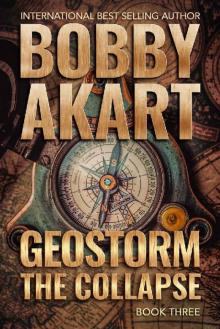 Geostorm The Collapse: A Post Apocalyptic EMP Survival Thriller (The Geostorm Series Book 3)
Geostorm The Collapse: A Post Apocalyptic EMP Survival Thriller (The Geostorm Series Book 3)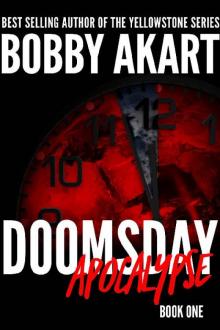 Doomsday Apocalypse
Doomsday Apocalypse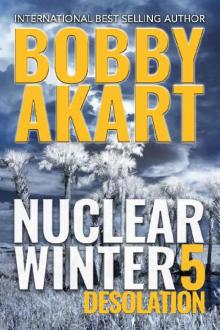 Nuclear Winter Desolation: Post Apocalyptic Survival Thriller (Nuclear Winter Series Book 5)
Nuclear Winter Desolation: Post Apocalyptic Survival Thriller (Nuclear Winter Series Book 5)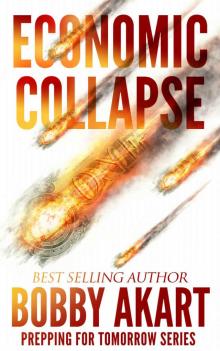 Economic Collapse (Prepping for Tomorrow Book 2)
Economic Collapse (Prepping for Tomorrow Book 2)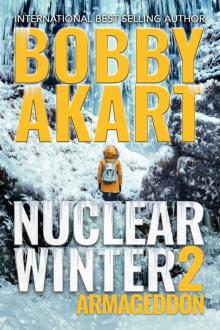 Nuclear Winter Armageddon
Nuclear Winter Armageddon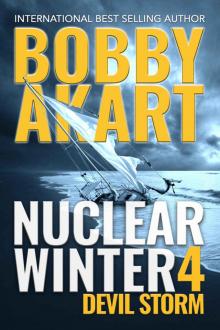 Nuclear Winter Devil Storm
Nuclear Winter Devil Storm Virus Hunters 3: A Medical Thriller
Virus Hunters 3: A Medical Thriller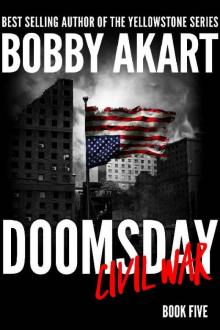 Doomsday Civil War: A Post-Apocalyptic Survival Thriller (The Doomsday Series Book 5)
Doomsday Civil War: A Post-Apocalyptic Survival Thriller (The Doomsday Series Book 5)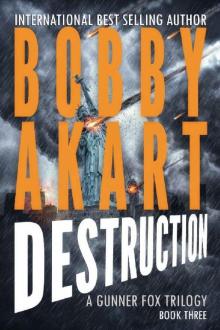 Asteroid Destruction
Asteroid Destruction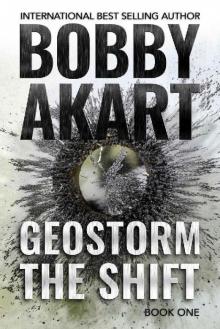 Geostorm the Shift
Geostorm the Shift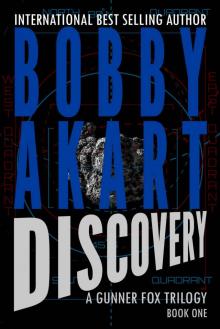 Asteroid Discovery
Asteroid Discovery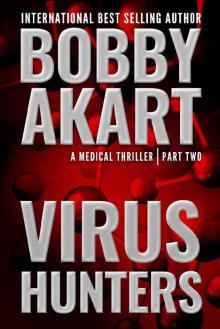 Virus Hunters 2: A Medical Thriller
Virus Hunters 2: A Medical Thriller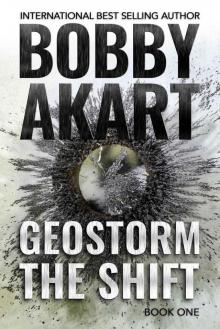 Geostorm The Shift: A Post-Apocalyptic EMP Survival Thriller (The Geostorm Series Book 1)
Geostorm The Shift: A Post-Apocalyptic EMP Survival Thriller (The Geostorm Series Book 1) Asteroid Diversion
Asteroid Diversion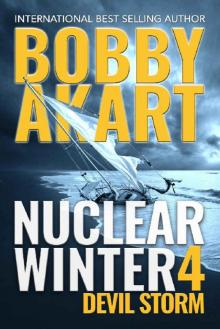 Nuclear Winter Devil Storm: Post Apocalyptic Survival Thriller (Nuclear Winter Series Book 4)
Nuclear Winter Devil Storm: Post Apocalyptic Survival Thriller (Nuclear Winter Series Book 4)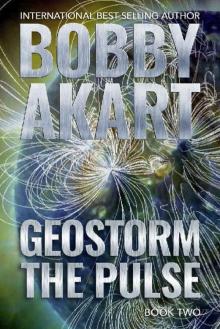 Geostorm The Pulse: A Post Apocalyptic EMP Survival Thriller (The Geostorm Series Book 2)
Geostorm The Pulse: A Post Apocalyptic EMP Survival Thriller (The Geostorm Series Book 2)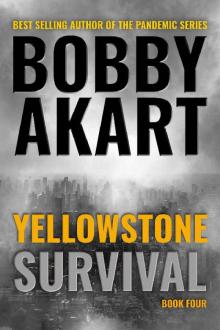 Yellowstone: Survival: A Post-Apocalyptic Survival Thriller (The Yellowstone Series Book 4)
Yellowstone: Survival: A Post-Apocalyptic Survival Thriller (The Yellowstone Series Book 4)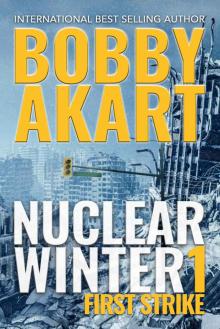 Nuclear Winter First Strike: Post-Apocalyptic Survival Thriller
Nuclear Winter First Strike: Post-Apocalyptic Survival Thriller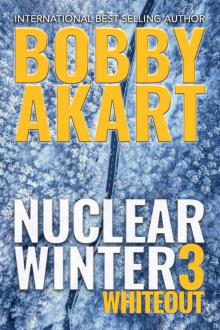 Nuclear Winter Whiteout
Nuclear Winter Whiteout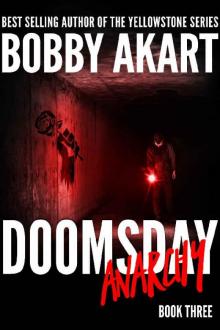 Doomsday Anarchy
Doomsday Anarchy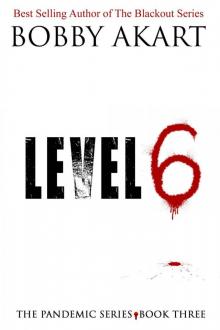 Pandemic: Level 6: A Post Apocalyptic Medical Thriller Fiction Series (The Pandemic Series Book 3)
Pandemic: Level 6: A Post Apocalyptic Medical Thriller Fiction Series (The Pandemic Series Book 3)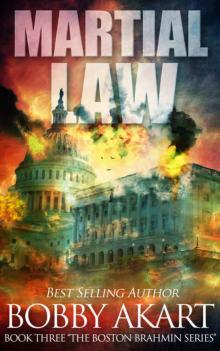 Martial Law
Martial Law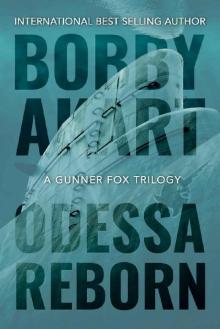 Odessa Reborn: A Terrorism Thriller (Gunner Fox Book 4)
Odessa Reborn: A Terrorism Thriller (Gunner Fox Book 4)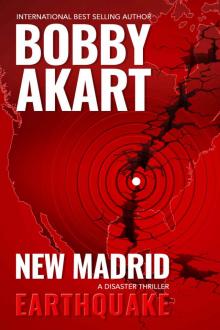 New Madrid Earthquake
New Madrid Earthquake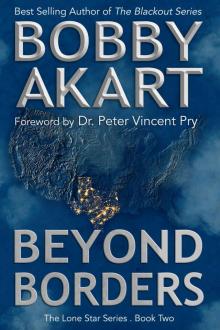 Beyond Borders: Post Apocalyptic EMP Survival Fiction (The Lone Star Series Book 2)
Beyond Borders: Post Apocalyptic EMP Survival Fiction (The Lone Star Series Book 2)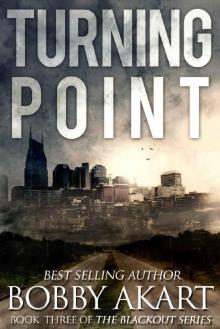 The Blackout Series (Book 3): Turning Point
The Blackout Series (Book 3): Turning Point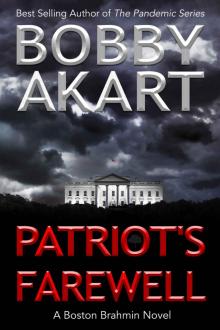 Patriot's Farewell: A Political Thriller Fiction Series (Boston Brahmin Political Thrillers Book 7)
Patriot's Farewell: A Political Thriller Fiction Series (Boston Brahmin Political Thrillers Book 7)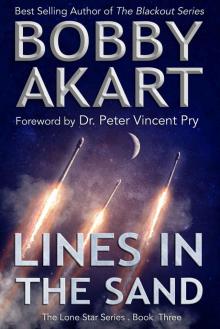 Lines in the Sand_Post Apocalyptic EMP Survival Fiction
Lines in the Sand_Post Apocalyptic EMP Survival Fiction The Mechanics: A Post-Apocalyptic Fiction Series
The Mechanics: A Post-Apocalyptic Fiction Series The Loyal Nine
The Loyal Nine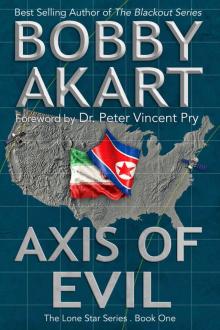 Axis of Evil
Axis of Evil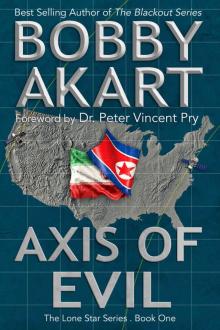 Axis of Evil: Post Apocalyptic EMP Survival Fiction (The Lone Star Series Book 1)
Axis of Evil: Post Apocalyptic EMP Survival Fiction (The Lone Star Series Book 1)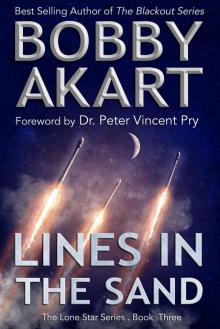 Lines in the Sand: Post Apocalyptic EMP Survival Fiction (The Lone Star Series Book 3)
Lines in the Sand: Post Apocalyptic EMP Survival Fiction (The Lone Star Series Book 3)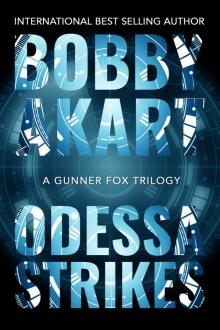 Odessa Strikes
Odessa Strikes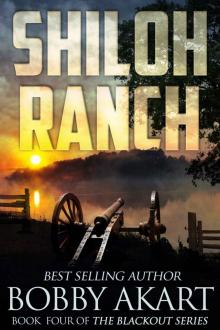 The Blackout Series (Book 4): Shiloh Ranch
The Blackout Series (Book 4): Shiloh Ranch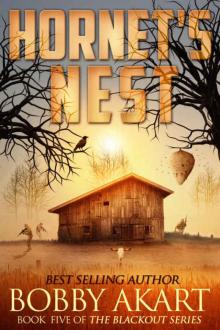 Hornet's Nest: A Post Apocalyptic EMP Survival Fiction Series (The Blackout Series Book 5)
Hornet's Nest: A Post Apocalyptic EMP Survival Fiction Series (The Blackout Series Book 5)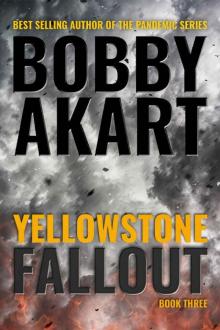 Yellowstone: Fallout: A Post-Apocalyptic Survival Thriller (The Yellowstone Series Book 3)
Yellowstone: Fallout: A Post-Apocalyptic Survival Thriller (The Yellowstone Series Book 3)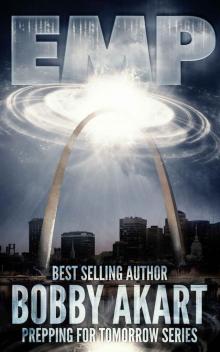 Electromagnetic Pulse
Electromagnetic Pulse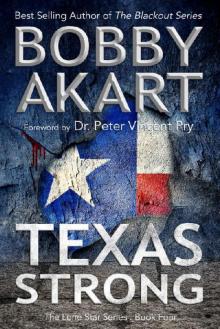 Texas Strong: Post Apocalyptic EMP Survival Fiction (The Lone Star Series Book 4)
Texas Strong: Post Apocalyptic EMP Survival Fiction (The Lone Star Series Book 4)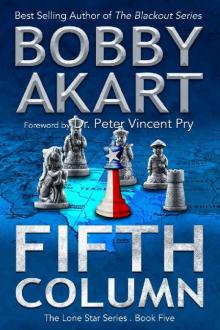 Fifth Column_Post Apocalyptic EMP Survival Fiction
Fifth Column_Post Apocalyptic EMP Survival Fiction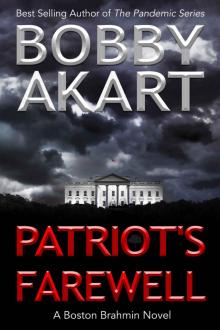 Patriot's Farewell
Patriot's Farewell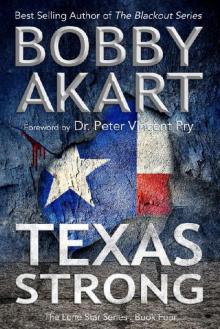 Texas Strong_Post Apocalyptic EMP Survival Fiction
Texas Strong_Post Apocalyptic EMP Survival Fiction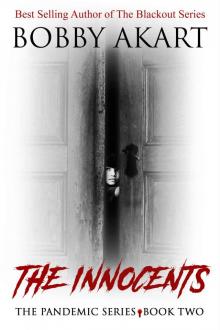 Pandemic: The Innocents: A Post-Apocalyptic Medical Thriller Fiction Series (The Pandemic Series Book 2)
Pandemic: The Innocents: A Post-Apocalyptic Medical Thriller Fiction Series (The Pandemic Series Book 2)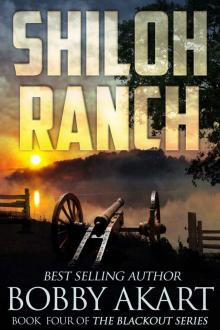 Shiloh Ranch: A Post Apocalyptic EMP Survival Fiction Series (The Blackout Series Book 4)
Shiloh Ranch: A Post Apocalyptic EMP Survival Fiction Series (The Blackout Series Book 4)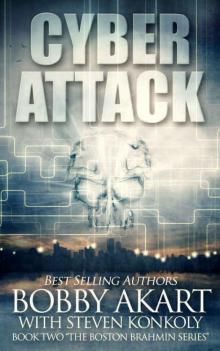 Cyber Attack
Cyber Attack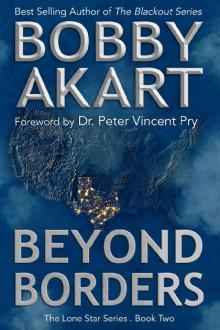 Beyond Borders
Beyond Borders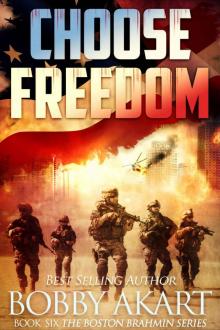 Choose Freedom: A Post-Apocalyptic Fiction Series (The Boston Brahmin Book 6)
Choose Freedom: A Post-Apocalyptic Fiction Series (The Boston Brahmin Book 6)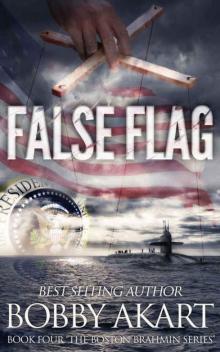 False Flag
False Flag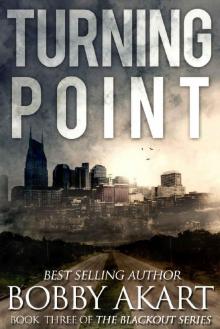 Turning Point: A Post Apocalyptic EMP Survival Fiction Series (The Blackout Series Book 3)
Turning Point: A Post Apocalyptic EMP Survival Fiction Series (The Blackout Series Book 3)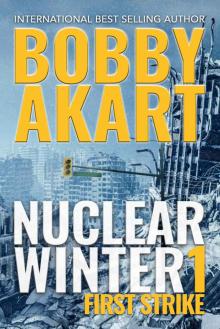 Nuclear Winter First Strike
Nuclear Winter First Strike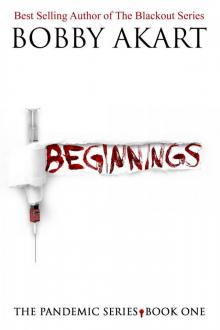 Pandemic: Beginnings: A Post-Apocalyptic Medical Thriller Fiction Series (The Pandemic Series Book 1)
Pandemic: Beginnings: A Post-Apocalyptic Medical Thriller Fiction Series (The Pandemic Series Book 1)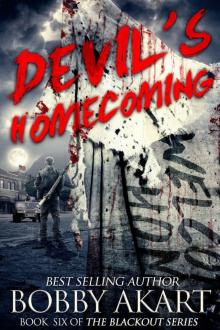 Devil's Homecoming: A Post Apocalyptic EMP Survival Fiction Series (The Blackout Series Book 6)
Devil's Homecoming: A Post Apocalyptic EMP Survival Fiction Series (The Blackout Series Book 6)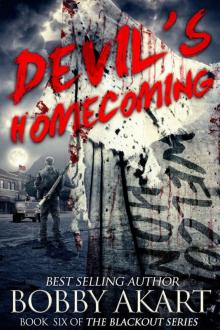 The Blackout Series (Book 6): Devil's Homecoming
The Blackout Series (Book 6): Devil's Homecoming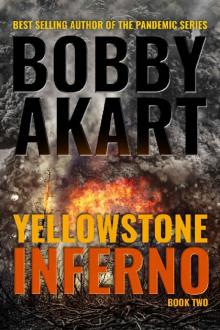 Yellowstone: Inferno: A Post-Apocalyptic Survival Thriller (The Yellowstone Series Book 2)
Yellowstone: Inferno: A Post-Apocalyptic Survival Thriller (The Yellowstone Series Book 2)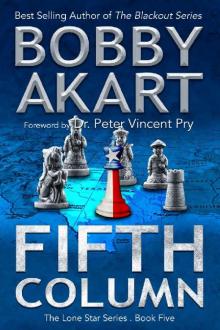 Fifth Column: Post Apocalyptic EMP Survival Fiction (The Lone Star Series Book 5)
Fifth Column: Post Apocalyptic EMP Survival Fiction (The Lone Star Series Book 5)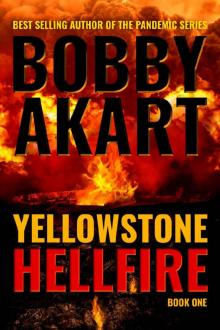 Yellowstone: Hellfire: A Post-Apocalyptic Survival Thriller (The Yellowstone Series Book 1)
Yellowstone: Hellfire: A Post-Apocalyptic Survival Thriller (The Yellowstone Series Book 1)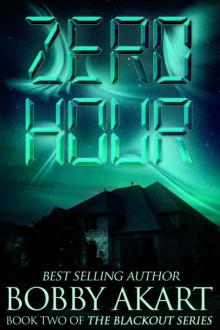 The Blackout Series (Book 2): Zero Hour
The Blackout Series (Book 2): Zero Hour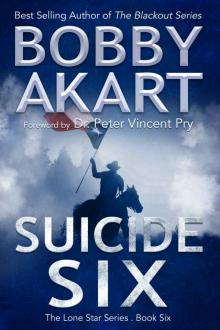 Suicide Six: Post Apocalyptic EMP Survival Fiction (The Lone Star Series Book 6)
Suicide Six: Post Apocalyptic EMP Survival Fiction (The Lone Star Series Book 6)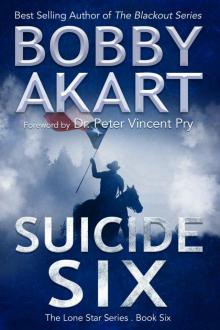 Suicide Six_Post Apocalyptic EMP Survival Fiction
Suicide Six_Post Apocalyptic EMP Survival Fiction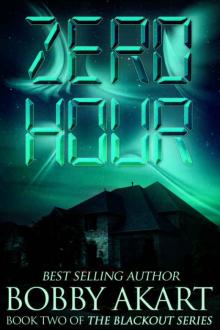 Zero Hour: A Post-Apocalyptic EMP Survival Fiction Series (The Blackout Series Book 2)
Zero Hour: A Post-Apocalyptic EMP Survival Fiction Series (The Blackout Series Book 2)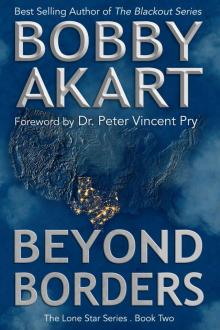 Beyond Borders_Post Apocalyptic EMP Survival Fiction
Beyond Borders_Post Apocalyptic EMP Survival Fiction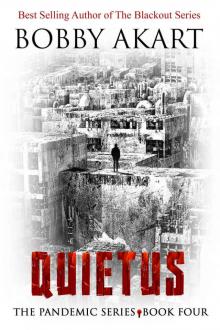 Pandemic: Quietus: A Post-Apocalyptic Dystopian Fiction Series (The Pandemic Series Book 4)
Pandemic: Quietus: A Post-Apocalyptic Dystopian Fiction Series (The Pandemic Series Book 4)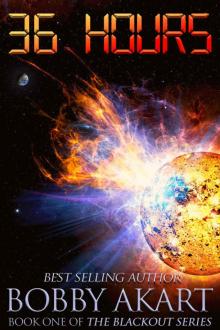 36 Hours: A Post-Apocalyptic EMP Survival Fiction Series
36 Hours: A Post-Apocalyptic EMP Survival Fiction Series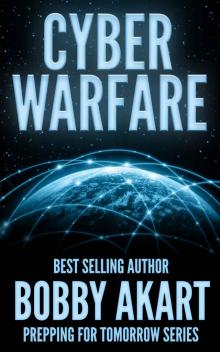 Cyber Warfare
Cyber Warfare